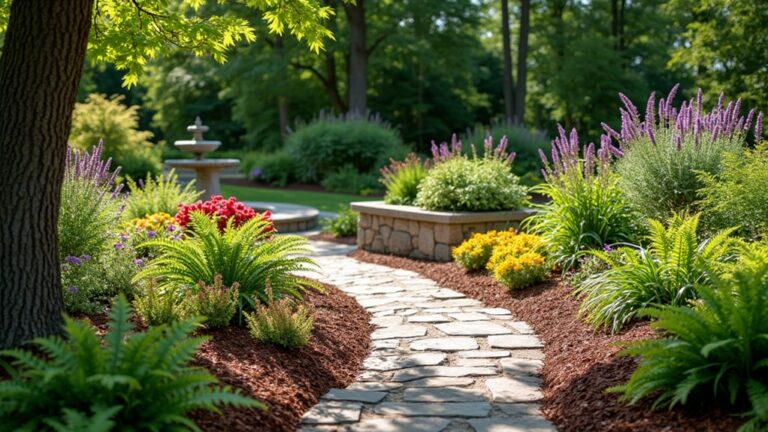When it comes to refreshing your outdoor space, mulch can be a game changer. It adds beauty while nurturing the soil below. Whether you’re drawn to organic textures or playful colors, there’s a mulch idea perfect for your garden. Each option offers distinct benefits that can truly elevate your landscape. Ready to explore some inspiring strategies together?
Organic Mulch for Nutrient-Rich Soil
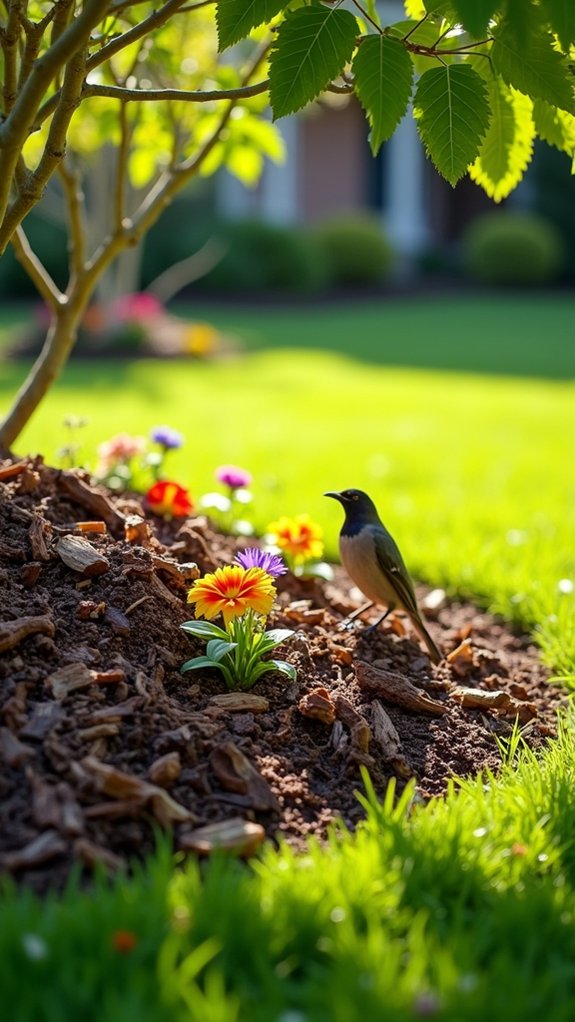
When I think about enhancing my garden’s health, organic mulch tops the list.
It’s amazing how this simple addition can improve soil structure and retain moisture. I love using materials like shredded leaves or wood chips, which break down over time, releasing nutrients.
Plus, it suppresses weeds, making my gardening tasks easier. Organic mulch truly transforms my garden into a thriving oasis.
Colored Mulch for a Pop of Color
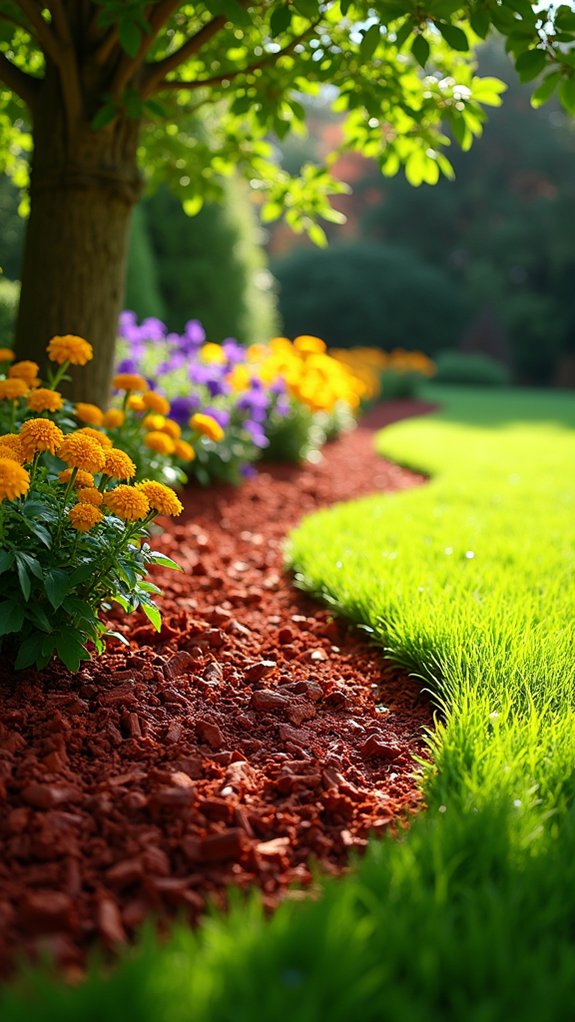
While I appreciate the benefits of organic mulch, colored mulch adds a vibrant touch to my garden.
I love how it instantly brightens up my flower beds and complements my plants.
Whether I choose deep red, rich brown, or even bright blue, colored mulch brings personality and contrast.
Colored mulch adds vibrant personality and striking contrast to any garden, enhancing its visual appeal.
It transforms my outdoor space, making it more inviting and eye-catching for everyone who visits.
Stone Mulch for a Modern Look
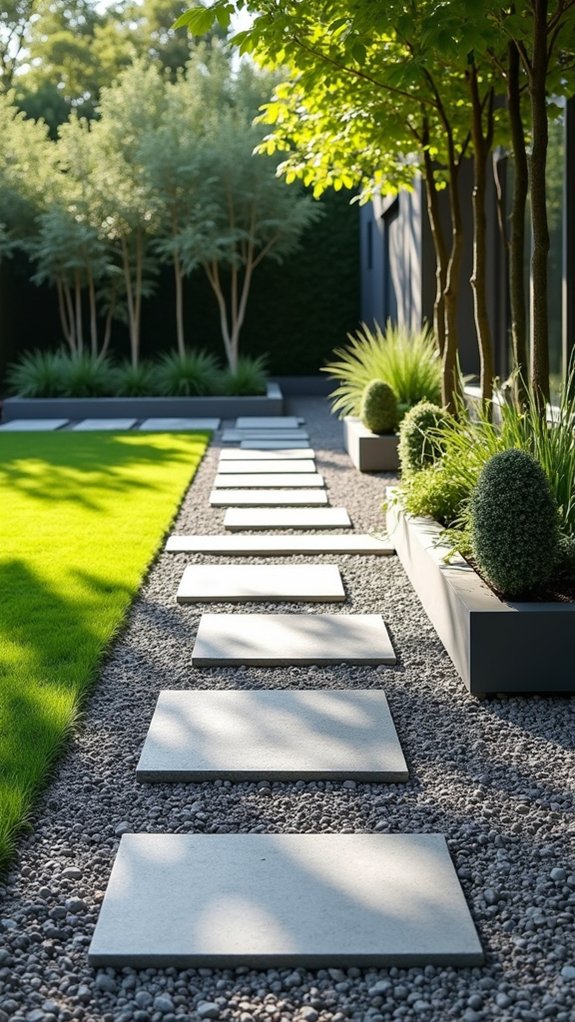
As I explore different landscaping options, I’ve discovered that stone mulch offers a sleek, modern aesthetic that really elevates my garden’s design.
Its clean lines and various colors create a stunning contrast against vibrant plants. Plus, it’s low-maintenance, which I appreciate.
I love how stone mulch not only enhances my outdoor space but also helps with drainage and weed control. It’s a win-win!
Rubber Mulch for Durability
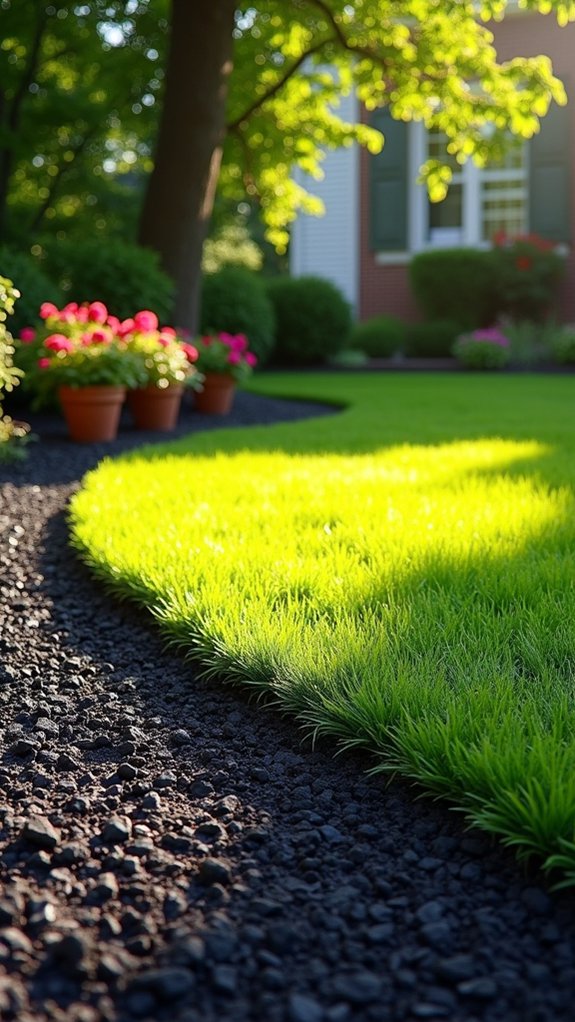
Although I initially hesitated to try rubber mulch, I’ve found it to be an incredibly durable option that stands up to the test of time.
Its resilience against weather changes and foot traffic is impressive. Plus, it doesn’t break down like organic mulches, saving me maintenance time.
I love the range of colors available, too, which adds a fun touch to my landscape!
Cocoa Hull Mulch for a Sweet Aroma
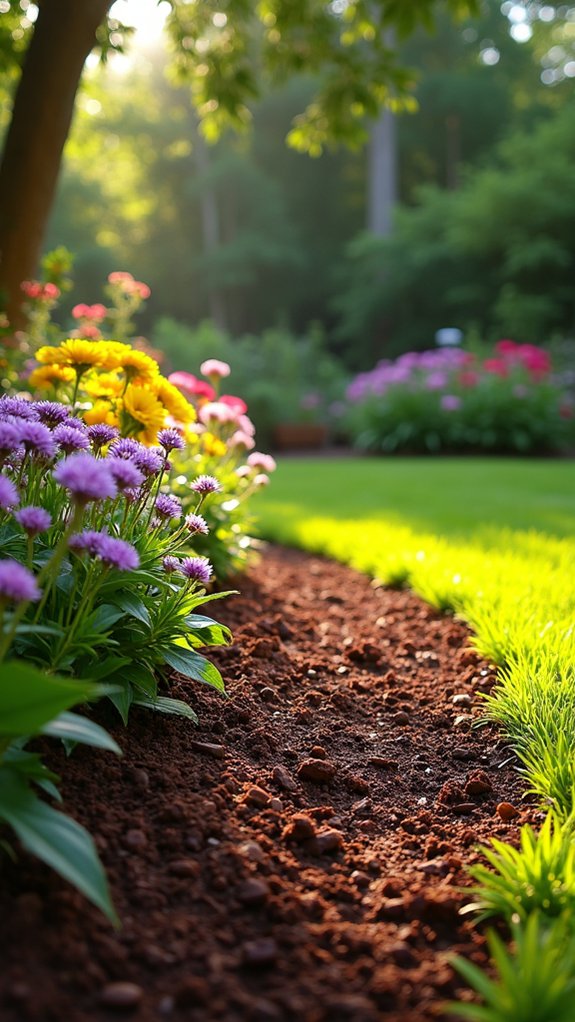
If you’re looking for a mulch that not only enhances your garden’s appearance but also fills the air with a delightful scent, cocoa hull mulch is a fantastic choice.
I love how its rich brown color complements my plants while the sweet aroma wafts through the air.
Plus, it’s an organic option that enriches the soil as it breaks down—truly a win-win for any garden!
Pine Straw Mulch for Southern Charm
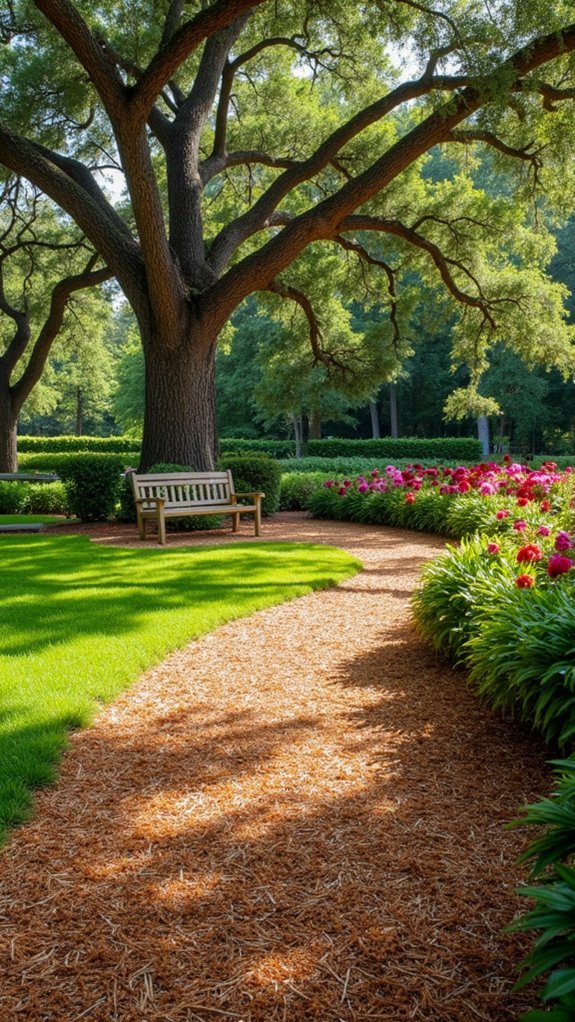
When I think of the charming landscapes of the South, pine straw mulch immediately comes to mind.
Its warm, earthy tones perfectly complement traditional southern homes and gardens. Plus, it’s an eco-friendly choice, breaking down to enrich the soil.
I love how it retains moisture and suppresses weeds, making maintenance easier while adding that quintessential southern charm to my outdoor space.
Bark Mulch for a Rustic Feel
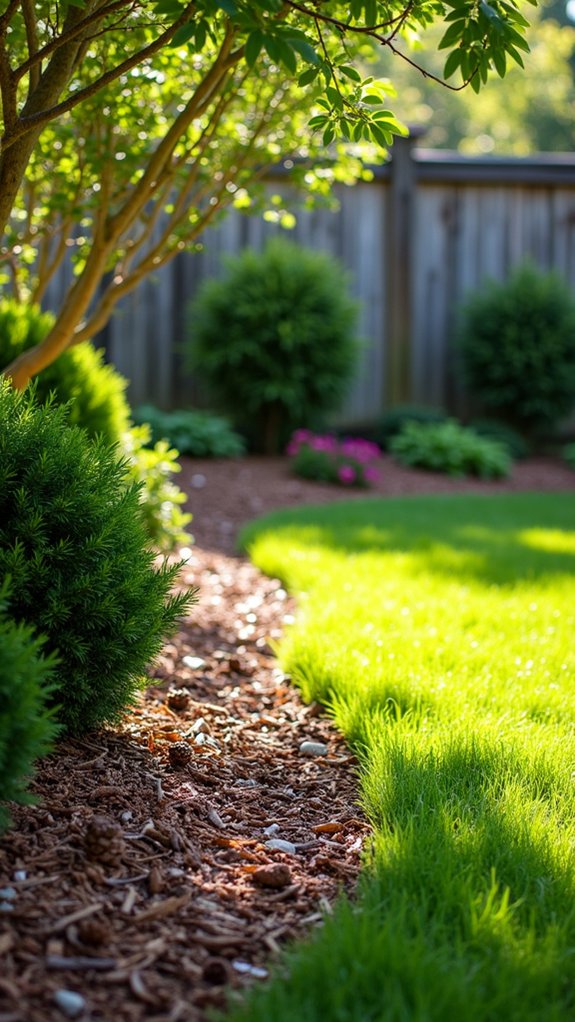
As I stroll through my garden, the rustic appeal of bark mulch draws me in, creating a warm and inviting atmosphere.
Its natural texture complements my plants beautifully, while also providing essential moisture retention.
I love how it suppresses weeds effortlessly, making maintenance a breeze.
Plus, the earthy scent adds to the charm, transforming my outdoor space into a serene retreat.
Gravel Mulch for Low Maintenance

Gravel mulch offers a practical solution for gardeners seeking low maintenance options.
I love how it not only suppresses weeds but also provides excellent drainage for plants.
Plus, it comes in various colors and sizes, allowing for creative landscaping.
Once I laid it down, I noticed less hassle with upkeep, making my outdoor space more enjoyable and beautiful.
Newspaper Layer for Weed Control
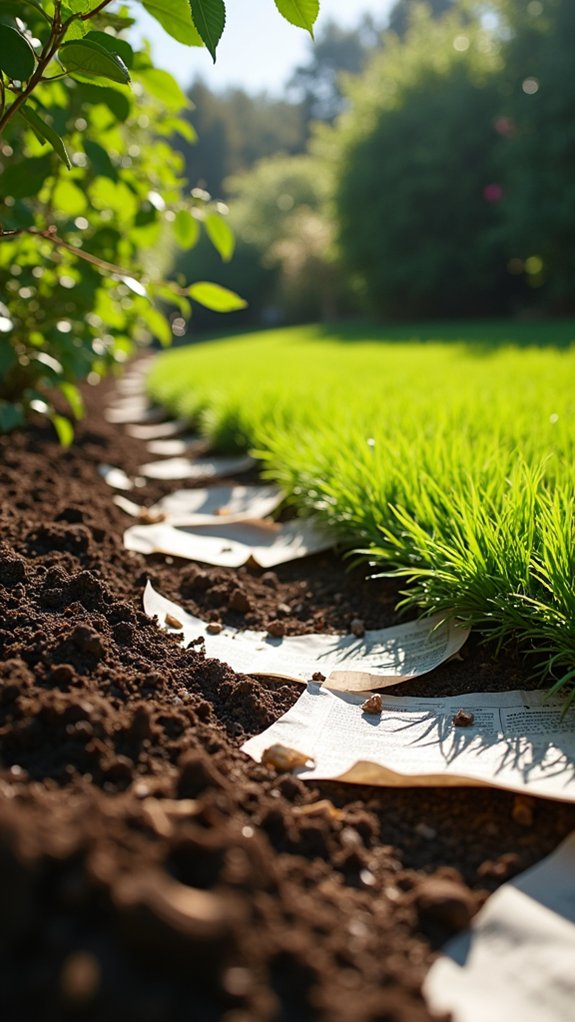
After enjoying the benefits of gravel mulch, I discovered that using a newspaper layer can be an equally effective method for weed control.
I simply lay down a few sheets of newspaper in my garden beds, overlapping them to block sunlight. Then, I cover the newspaper with mulch.
This technique not only suppresses weeds but also enriches the soil as the paper breaks down over time.
Wood Chips for a Natural Aesthetic
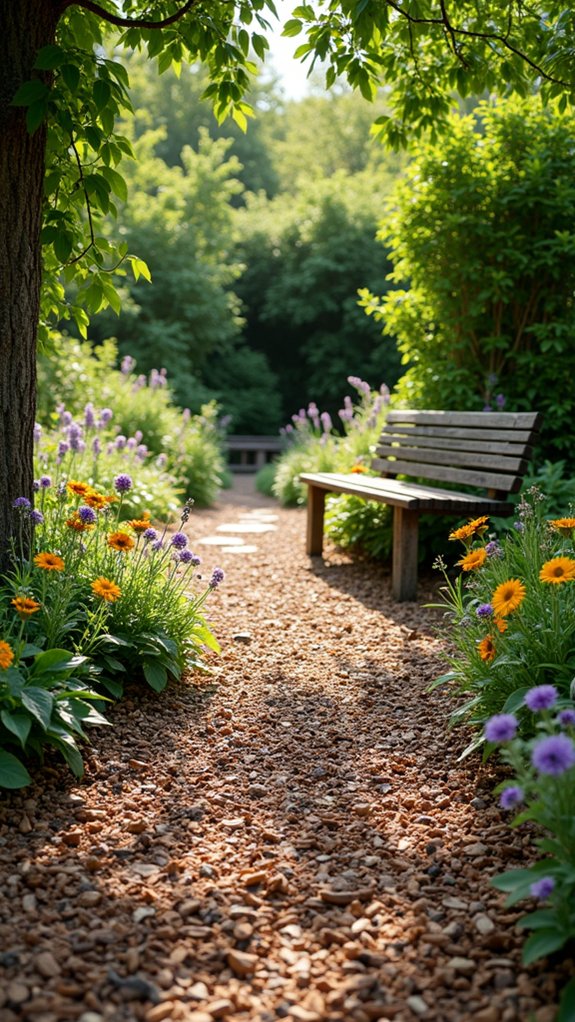
Wood chips can transform your garden into a natural paradise with their rustic charm.
I love how they blend seamlessly with plants, creating a warm and inviting atmosphere. Plus, they help retain moisture and suppress weeds, making maintenance a breeze.
Whether you choose cedar, pine, or hardwood, wood chips add texture and depth, enhancing your landscape’s overall appeal effortlessly.
Compost as Mulch for Soil Enrichment

While many people overlook compost as a mulch option, I find it to be one of the best choices for enriching soil.
It adds essential nutrients, improves soil structure, and enhances moisture retention. Plus, using compost helps reduce waste by recycling kitchen scraps and yard debris.
With just a layer of compost, my garden thrives, and I love the results!
Straw Mulch for Vegetable Gardens

Using compost can enhance soil health, but straw mulch offers its own set of advantages, especially for vegetable gardens.
I love using straw because it suppresses weeds, retains moisture, and adds organic matter as it breaks down.
Plus, it’s lightweight and easy to spread.
With straw, my veggies thrive while I enjoy less maintenance and a more productive garden.
Grass Clippings for Easy Recycling
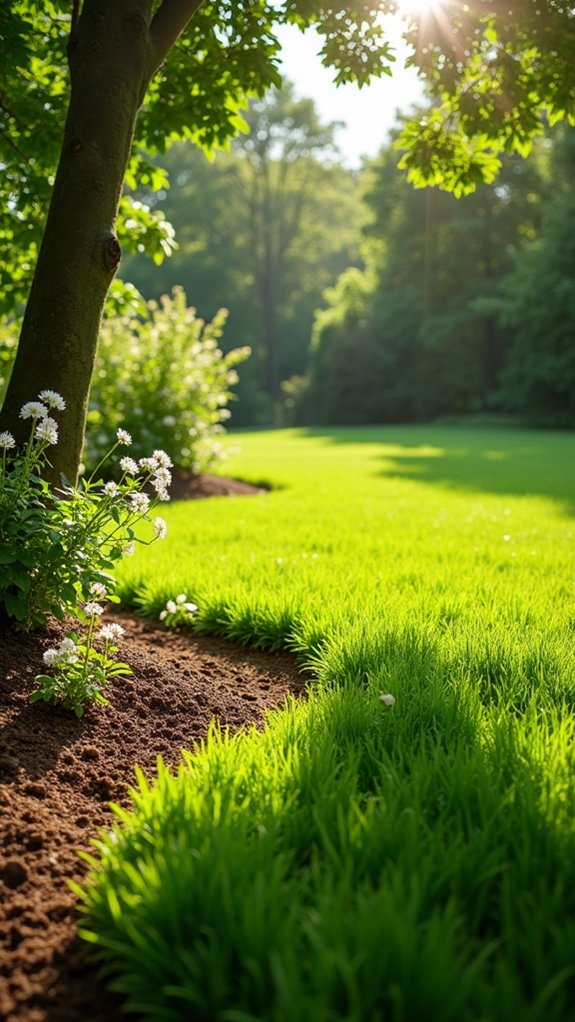
One of my favorite ways to recycle grass clippings is by using them as mulch in my garden. They decompose quickly, enriching the soil while helping retain moisture.
Plus, it’s a great way to reduce waste! I simply spread a thin layer around my plants, and it keeps weeds at bay.
It’s simple, effective, and eco-friendly—perfect for any gardener.
Shell Mulch for Coastal Vibes

After discovering the benefits of grass clippings, I was excited to explore other natural mulch options, like shell mulch.
It adds a beautiful coastal vibe to my garden while helping retain moisture and suppress weeds.
I love how the shells reflect sunlight, creating a shimmering effect.
Plus, they’re eco-friendly and provide a unique texture that enhances my outdoor space.
Pea Gravel for Pathways
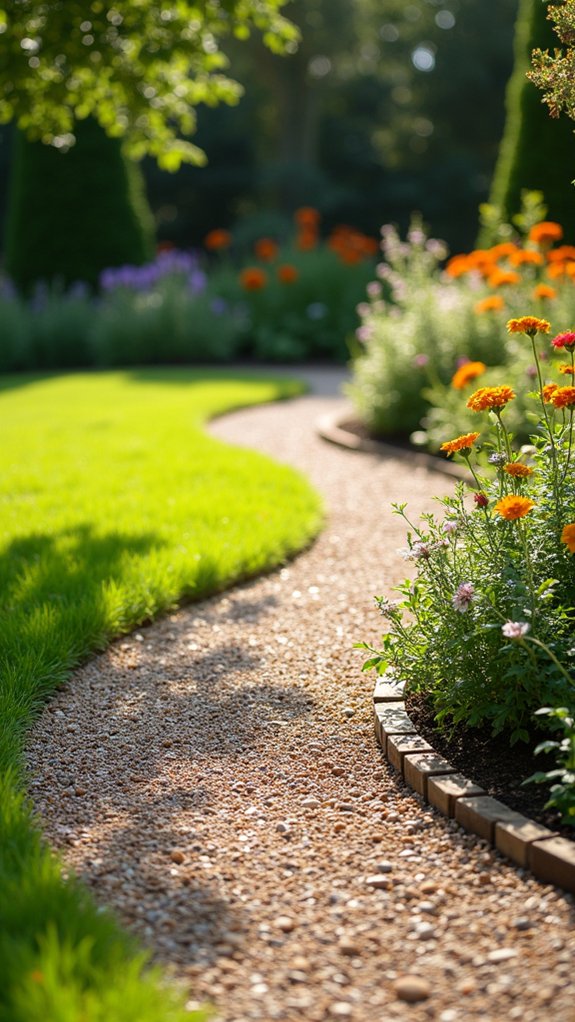
While exploring options for enhancing my garden pathways, I discovered that pea gravel provides an attractive and practical solution.
It’s easy to spread, allowing me to create a smooth, even surface that complements my plants. Plus, its natural look blends seamlessly with the landscape.
I love how it drains well, keeping my pathways dry and functional, even after rain.
Black Mulch for a Sleek Appearance
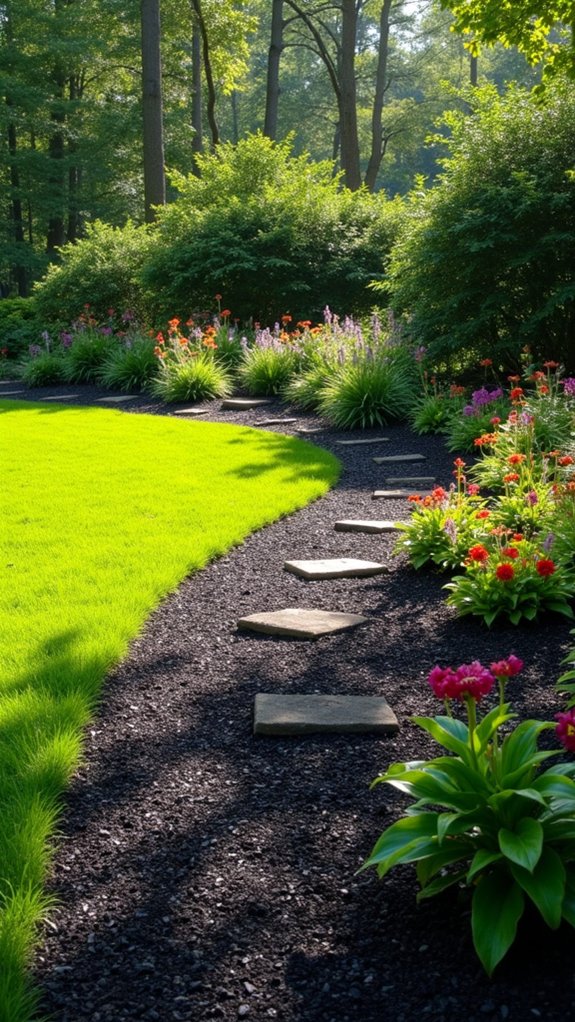
Choosing black mulch can instantly elevate your garden’s aesthetic, giving it a sleek and modern look.
I love how it contrasts beautifully with vibrant flowers and greenery, creating a striking visual appeal.
Plus, its uniform appearance provides a polished finish that enhances any landscape design.
If you want to make your garden stand out, black mulch is definitely the way to go!
Sphagnum Moss for Moisture Retention
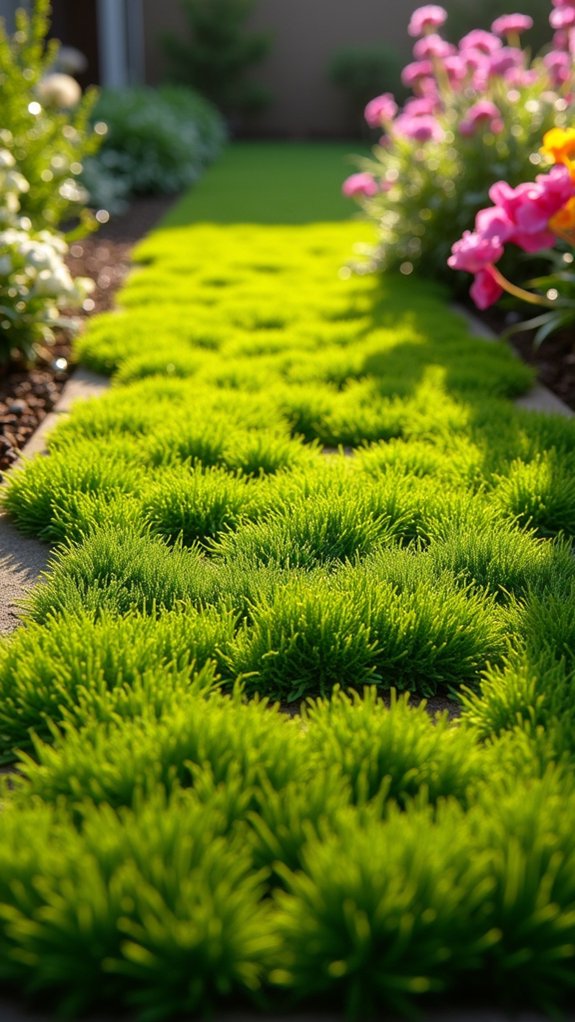
If you’re looking for a natural way to enhance your garden’s health, consider using sphagnum moss for moisture retention.
I’ve found it incredibly effective at keeping soil damp, especially during hot months. Just spread a layer around your plants, and watch how it helps reduce evaporation.
It’s lightweight, easy to work with, and your plants will thrive with this simple addition!
Leaves as Mulch for Eco-Friendly Gardening
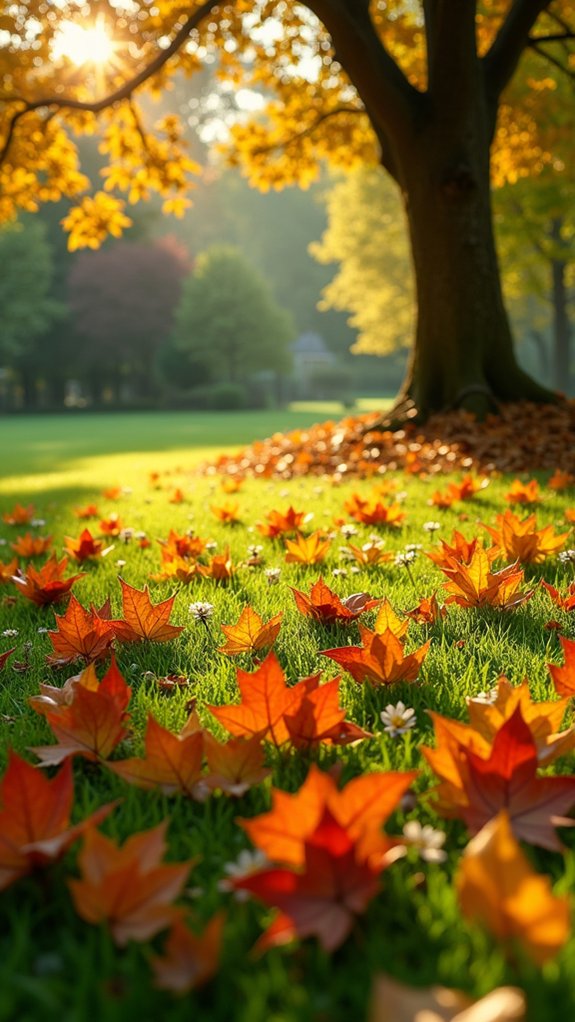
Since I discovered the benefits of using leaves as mulch, my garden has never looked better.
I simply gather fallen leaves in the autumn, shred them, and spread them around my plants. This eco-friendly approach enriches the soil, retains moisture, and suppresses weeds.
Plus, it’s a great way to recycle natural materials, giving my garden a healthy, vibrant boost!
Fabric Landscape Barrier for Longevity
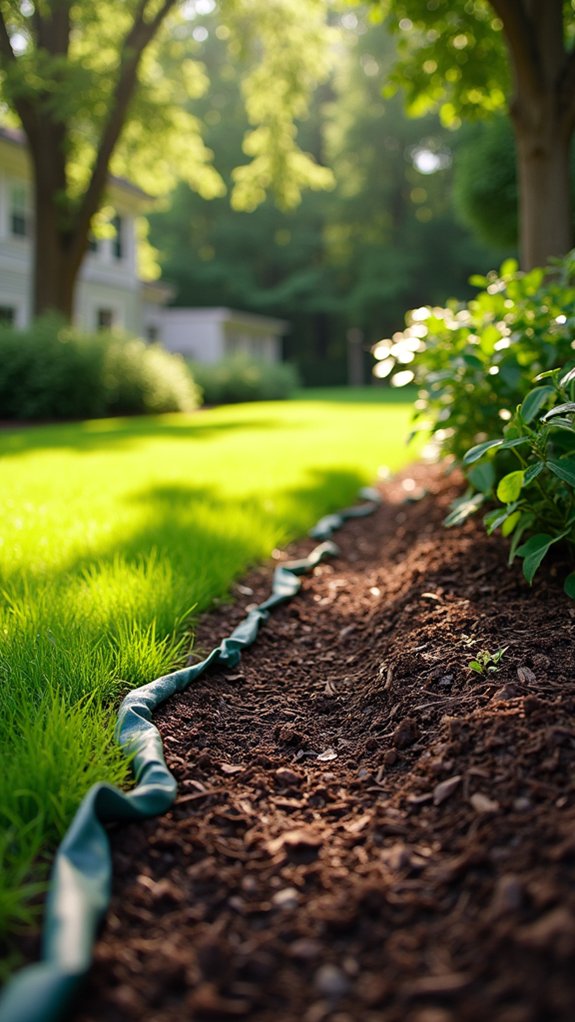
After embracing the benefits of using leaves as mulch, I explored other methods to enhance my garden’s longevity.
One effective solution I found is using a fabric landscape barrier. This material prevents weeds while allowing water and nutrients to reach the soil.
Installing it beneath my mulch not only simplifies maintenance but also keeps my garden thriving for years to come.
Coconut Coir for Water Retention
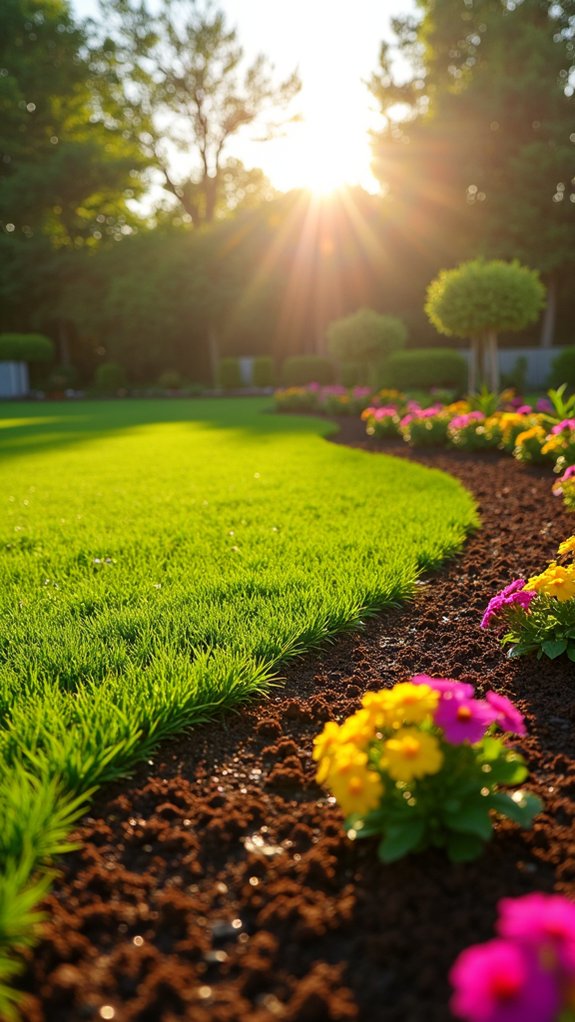
While exploring sustainable gardening practices, I discovered the remarkable benefits of coconut coir for water retention.
This natural mulch absorbs moisture and releases it slowly, keeping my plants hydrated longer. Plus, it improves soil structure, promoting healthy root growth.
I’ve noticed a significant reduction in my watering needs since using coir, making it an excellent choice for anyone looking to conserve water in their garden.
Pebble Mulch for Decorative Touch
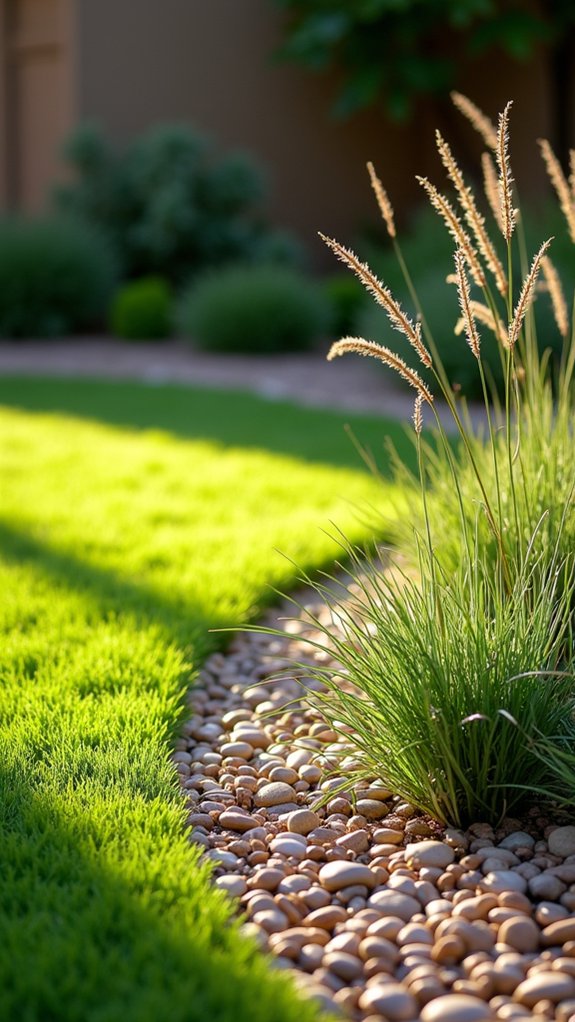
Building on my sustainable gardening efforts, I’ve found that pebble mulch adds a stunning decorative touch to my landscape.
It not only enhances the visual appeal but also provides excellent drainage. I love how the smooth stones contrast with vibrant plants, creating a serene atmosphere.
Plus, it’s low maintenance—just spread it out, and I’m done! It truly elevates my outdoor space.
Fall Leaves for Seasonal Appeal
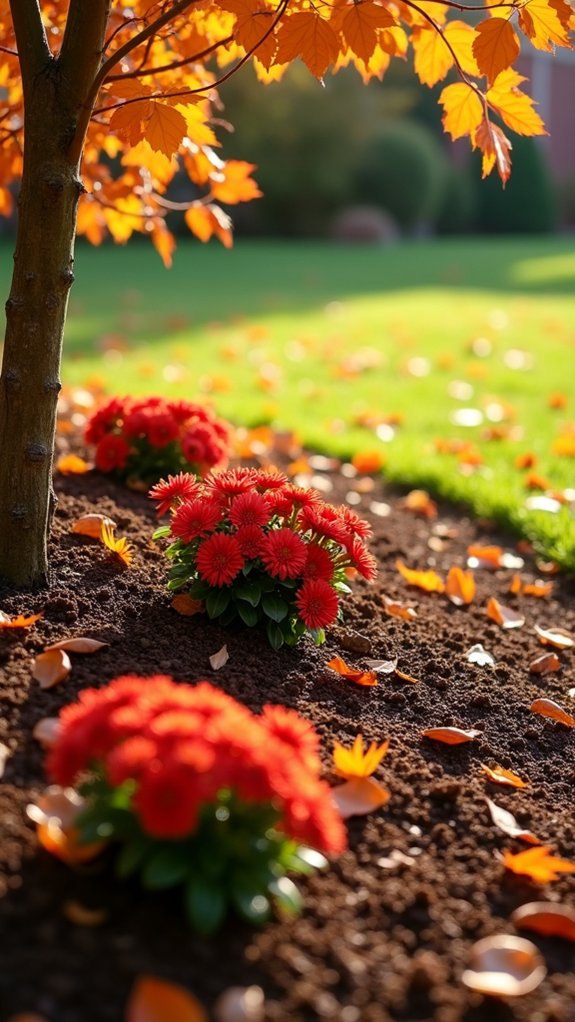
As autumn arrives and leaves transform into a tapestry of warm hues, I can’t help but appreciate how fall leaves can bring seasonal appeal to my garden.
I love collecting vibrant reds, yellows, and oranges to create natural mulch. They not only enhance the beauty of my landscape but also nourish the soil, providing a cozy blanket for my plants during the cooler months.
Recycled Wood Products for Sustainability
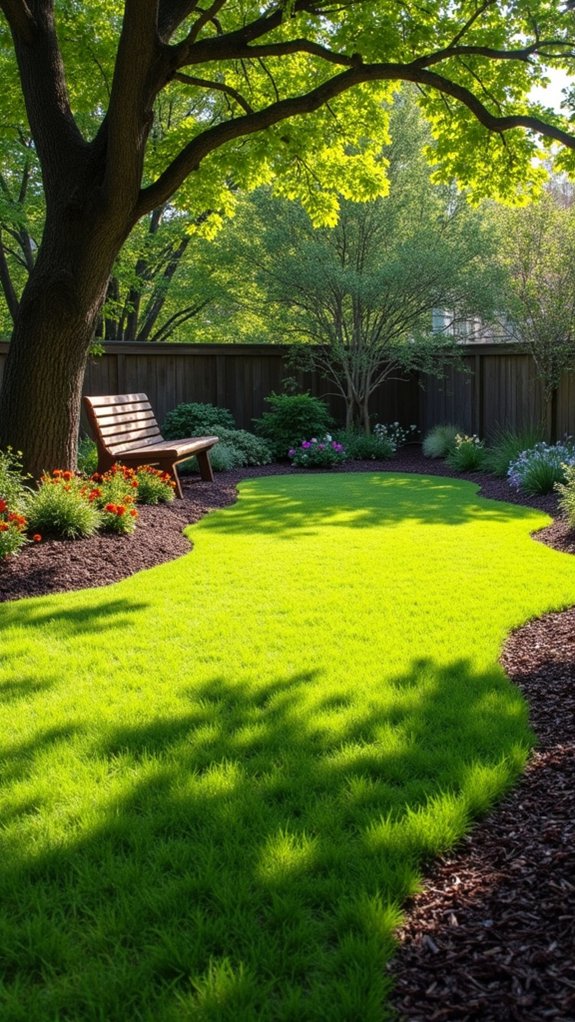
Since I’ve started incorporating recycled wood products into my landscaping, I’ve noticed a remarkable boost in both sustainability and aesthetics.
Using reclaimed wood for borders and planters not only reduces waste but also adds character to my garden.
Plus, these materials blend beautifully with nature.
It’s rewarding to know I’m making eco-friendly choices while enhancing my outdoor space’s charm.
Mulch Mounds for Sloped Areas
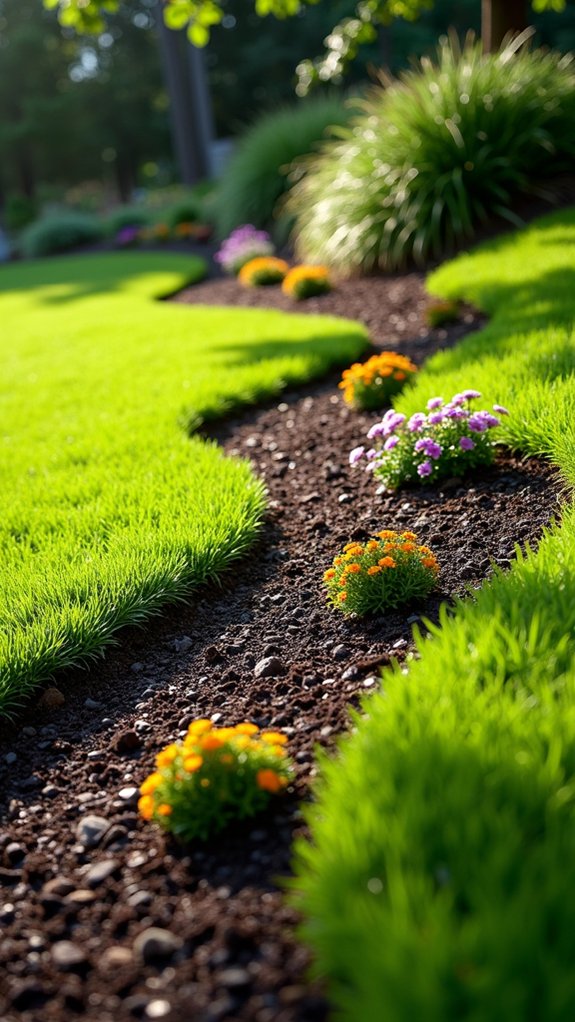
When I tackle landscaping on sloped areas, I often find that creating mulch mounds not only helps with erosion control but also adds visual interest.
I shape the mounds to follow the slope’s natural lines, which enhances drainage.
Plus, I love mixing different types of mulch to create texture.
These mounds transform the landscape while providing a practical solution to potential water runoff issues.

